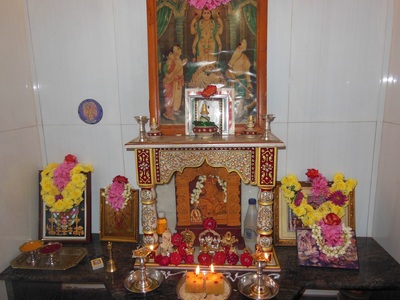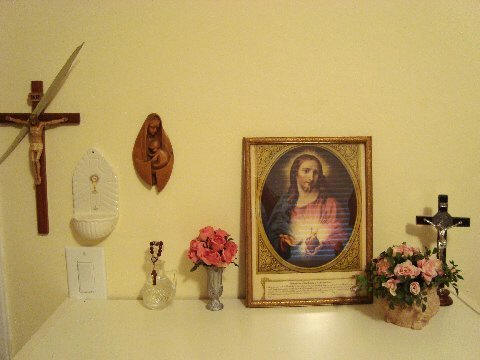The history of shrines spans back nearly as far as human civilisation does, with some of the first recorded man made structures like the Megalithic Temples of Malta thought to be religious places of worship.
Due to the breadth of the subject I will mainly focus this research on domestic shrines and also include examples of secular shrines which are of more interest to this project.

Hinduism
- In homes, many Hindus have a shrine (a cabinet shelf or a room) to put up pictures or statues of deities.
- In these shrines, oil lamps and incense sticks are lit, mantras are recited, and offerings of food are made.
- Family members often perform these rituals together and treat the family deity with hospitality.

Kamidana
- (Japanese: “god-shelf”), in the Shinto religion of Japan.
- A miniature shrine, the centre of daily worship in a household or a shop. Usually a small cupboard or shelf.
- It must be above an ordinary person’s eye level.
- Accessories usually include two small saucers, a lidded bowl, two mizuire (vase-like lidded sake jars), two vases, and two candle holders. Excepting the candle holders, these are usually of white ceramic. The candle holders are usually of black metal. There is also often two Chinese style ceramic vases and/or a kagami (a disk of polished metal, held in a wooden stand).
- Offerings include two sprigs of sakaki (can be substituted for other plant branches), salt, rice, water, and sake. White candles are also used for the shrine.


Catholicism
- Long before Christians built churches for public prayer, they worshipped daily in their homes
- These shrines often contain a crucifix, religious pictures (icons), Bible, holy water, lights, and flowers.
- Erected on a shelf or table in the living or dining room, the family assembles there before or after meals at day’s beginning and at day’s ending.
Day of The Dead Shrines
- Every November 2, known as the Day of the Dead or All Souls’ Day, Hispanics across the Southwest transform grave sites, offices, and corners of their homes into vibrant memorials for their deceased loved ones by assembling multitiered ofrendas, or altars.
- Altars are also meant to welcome returning spirits.
- A large photograph of the loved one is the centerpiece. Smaller, informal snapshots can also be included.
- Water, fruit punch and food is offered at the shrines. Salt, a symbol of purification, is for the dead to season the food you’ve offered him.
- • The deceased’s favorite knickknacks, food, or tools (if he was a barber, for example, his straight razor, foam brush, and scissors) create a familiar setting for his return.
- Marigolds grow and wilt quickly, reflecting the fleeting nature of life. Their aroma helps lure a spirit back.
- Black represents death, purple means grief or mourning, pink is for celebration, white symbolizes hope, and yellow stands in for the sun.
- Four candles at the top represent the cardinal directions and provide a lighted path to this world.
- Burning copal is a holdover tradition from the Aztecs, who used the incense as an offering to the gods. It is still used in Catholic funeral masses.

Spontaneous Shrines
- A term first used by scholars Jack Santino and Sylvia Grider to describe the collections of condolence materials left at sites of death or tragedy.
- Often found when famous figures die, like the David Bowie Shrine in London as well as John Lennon and Michael Jackson.
- These figures are almost treated as Gods or religious icons in their deaths and the shrines represent a communal mourning.
- These types of shrines could also appear where a person has died in a shocking or public place and the candles and flowers will appear here to mark the death and act as a sign of respect.


Voodoo Shrines – New Orleans
- Originating in the West African country of Benin, the spiritual life of Voodoo came to New Orleans with the slave trade.
- The name “Voodoo” evolved from the Fon word Voudon, meaning “spirit” or “deity”.
- Gris-Gris are a voodoo object used to provoke magic and describes the act itself.
- Rituals or objects used to convey magical protection
- The use of fetishes, or objects meant to contain the essence or power of particular spirits
- Divination using the interpretation of physical activities, like tossing seed hulls or pulling a stone of a certain color from a tree
- The association of colors, foods, plants and other items with specific loa and the use of these items to pay tribute to the loa.